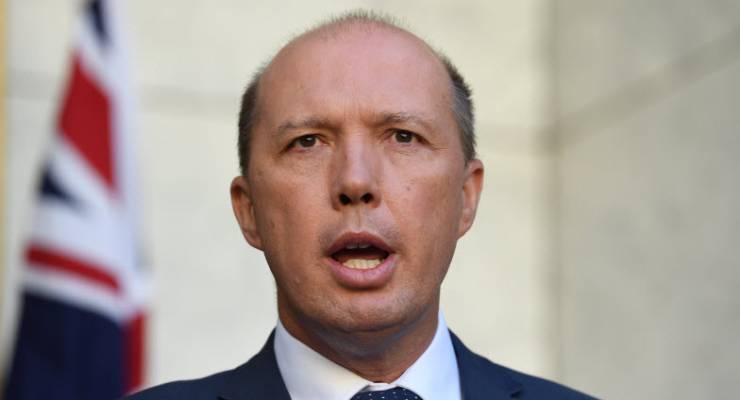
To no-one’s surprise, Peter Dutton has used the killing of a young woman of colour in Melbourne to advance the Coalition’s “law and order” agenda, saying that, “there is a major law and order problem in Victoria and more people are going to be hurt until the rule of law is enforced by the Victorian government.”
The killing occurred on the same weekend as an all-in brawl between Geelong and Melbourne supporters at an AFL game, about as Anglo an event as you could get, but no mention of that, of course.
The right gonna be racist, and there was no chance this issue wouldn’t be taken up. The awful killing of Laa Chol, a 19 year old South Sudanese woman, stabbed at a party, is a two-for-one: a chance to talk about “no-go” Melbourne, using a woman’s violent killing.
But therein lies the rub: for much of this discourse — which many on the left are reasonably denouncing — has been contributed to by a totalising discourse on violence in recent weeks and months, with a cluster of fairly hideous murders, from that of Eurydice Dixon onwards, de-normalising social violence, and rendering it as a phenomenon about which “something must be done”.
This way of talking about lethal violence — using violence against women as its focus — has now become wholly paradoxical in its effects, by demanding impossible social changes, and legitimating endless extensions of state power as a way of achieving it.
Recently, for example, the tally kept by “Counting Dead Women” — 37 to date this year — has become a focus. This is a record of awful events, but it’s also a record of an actual fall in killings of women: since the gun buy-back of the late ’90s, the annual number has been about 80-85 murders a year (out of a total of 260-280, with 180-200 men and boys murdered per year). This represents a murder rate for women, of one in 200,000, about the lowest rate for any population group in the world. (By comparison, around 550 women, 10 a week, will die violently in car accidents this year).
Why does the possibility of a reduction in such murders not prompt relief? Because what has arisen around such events is the false notion of a dangerous city, and the absurd demand that zero deaths from violence be a policy target. The purpose of that often has more to do with gender-cultural wars of position than real attempts to reduce violence, but it serves another, and worse purpose: legitimating regimes of inflexible incarceration, and collective blaming
This simply legitimates reactionary policies using progressive themes, and it is clear that Dutton is using the intense focus on violence against women to focus fear and hatred on the South Sudanese-Australian community, and to portray African-Australian boys and men as savages.
The result of that is repression and incarceration, largely of the powerless. The racism largely comes from the right, but a lot of the statism comes from the left and progressives. What could once have been acknowledged — the complex causes and types of violence — has been reduced to simplistic explanations. #yesallmen acts as a precursor to #yesallAfricanAustralians.
Such wilful punitive statism comes full-circle: the principal victims of it are Indigenous women, currently subject to an epidemic of incarceration. The Palazschzuk government, having positioned itself as a champion of violence against women is contracting Serco to run a new women’s prison, essentially commodifying state violence against its inmates, largely Indigenous, largely convicted of non-violent crimes. A coincidence, only if you ignore the class relations that have always been part of the impossible demands on violence against women.
The lesson of this latest nasty episode is that you’ll never win a “zero tolerance” competition against the right, and there’s no point contributing to one. We need better discussions on the social nature of violence on all fronts.








No surprise that Gestapotato is seeking to use a terrible tragedy to score political points. Dead-eyes Dutton is the s**t that Australia needs to scrape from its collective shoe.
He continues to ignore the fact that Victoria’s crime rates are consistently lower than either NSW’s or Queensland’s, & the fact that Victorian Crime rates peaked under the previous Liberal Government, after they cut money to the police force. They’ve now fallen for two years running.
Geeze, such a shame when the Facts have a left wing bias, eh Gestapotato?
Before pointing the finger at the Victorians Dutton should pay attention to the ‘major law and order problem’ relevant to his own government ie: the prosecution of Witness K & his solicitor Bernard Collaery for exposing an illegal practice by ASIS under the auspices of Howard & Downer. A practice which was not in Australia’s interests – having nothing to do with protection and national security – but for the ultimate profit line of Woodside Petroleum.
Dutton .. The Skull that Speaks…
There should be a competition for the best alt-moniker for the human bogey.
It must drive Dutton to distraction that the South Sudanese are Christians and not Muslims.
The buck doesn’t stop at Dutton (or Jason Wood) – look higher up that fued chain – Turnbull (like the Wizard of Oz) pushing buttons and dog-whistling – while the likes of Shane Wright (The Dum, last Friday) reckons “there isn’t a racist bone in (Turnbull’s) body”?
So why Is Turnbull playing that card? Letting Dutton et al do it? “It’s only politix”?
What sort of imprimatur would such Prime Ministerial press releases carry to that demographic?